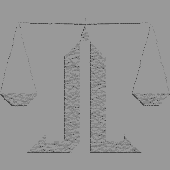

Becher v. Becher
New York Supreme Court, Appellate Division -- Second Department
BACKGROUND
New York Domestic Relations Law ' 236(B), known as the Equitable Distribution Law, vests a court with broad equitable power to distribute the property of a marital estate and determine maintenance in the event of a divorce. N.Y. Dom. Rel. Law ' 236(B) (McKinney 1986 & Supp. 1997); Majauskas v. Majauskas, 61 N.Y.2d 481, 489, 474 N.Y.S.2d 699, 703 (1984). One of the stated purposes of the Equitable Distribution Law is to facilitate the process whereby spouses whose marriage has ended can become economically independent from each other. O'Brien v. O'Brien, 66 N.Y.2d 576, 585, 498 N.Y.S.2d 743, 747 (1985). The prin-ciple behind this law is to allow courts the flexibility to make distributions and maintenance awards according to the needs of the spouses. See N.Y. Dom. Rel. Law ' 236(B)(5)(c) (McKinney 1986); Joan M. Krauskopf, A Theory for "Just" Division of Marital Property in Missouri, 41 Mo. L. Rev. 165, 175-76 (1976).
Prior to 1992, the statute authorized courts, when making such discretion-based determinations, to consider twelve delineated factors, including factors that impacted on the parties economically and other equitable factors like the wasteful disposition of assets by either spouse. N.Y. Dom. Rel. Law ' 236(B)(5)(d)(1-12) (McKinney 1986). As a thirteenth and final factor, the statute also permitted courts to consider "any other factor which the court shall expressly find to be just and proper." N.Y. Dom. Rel. Law ' 236(B)(5)(d)(13) (McKinney 1986). This final factor obviously is very broad and permits a trial court to deny equitable relief to a spouse even upon the basis of factors that have little bearing on the economic situations of the parties to a divorce. See Langdon v. Langdon, 138 A.D.2d 358, 525 N.Y.S.2d 649 (final factor interpreted to encompass consideration of the equitable clean hands doctrine), lv. to app. den., 73 N.Y.2d 702, 536 N.Y.S.2d 743.
The legislature amended the law in 1992 to include an additional factor which courts were allowed to consider when making determinations of equitable distributions -and maintenance awards -- whether a party had removed all voluntary barriers to re-marriage for its spouse. N.Y. Dom. Rel. Law ' 253(B)(5)(h) and (6)(d) (McKinney Supp. 1997). The 1992 law was passed to address the particular situation, occurring often in the courts of the State of New York, where a Jewish husband, despite the conclusion of a civil divorce, would withhold a religious divorce from his wife either as a means of extorting money or other concessions, such as custody of the couples' children, or simply out of vindictiveness. The law entitles the court to consider the economic or other impact of the husband's decision in withholding the religious divorce in making such discretion-based determinations of distribution and maintenance. The amendment attempts to alleviate to a limited degree the problem created by the lack of congruity between secular and religious law. In the case of observant Jewish women, a civil divorce does not entirely free them from the bonds of marriage. In order to terminate a marriage, Orthodox Jewish law requires that a husband provide his wife with a Jewish bill of divorce, known as a get. 6 Encyclopedia Judaica 132 (1971); Schwartz v. Schwartz, 153 Misc.2d 789, 790, 583 N.Y.S.2d 716, 717 (1992), aff'd, 652 N.Y.S.2d 616 (1997). The court in In re Marriage of Goldman, 554 N.E.2d 1016 (Ill. App. 1st Div. 1990), described the get procedure as follows:
A rabbi is ordinarily present but is not necessary to the procedure. The husband obtaining the get need not profess any religious belief or engage in any act of worship. Essentially, a get is a written release from the marriage con-tract. The husband appoints a scribe to draft the 12-line document in conform-ance with certain prescribed formal-ities. The husband then signs the document in the presence of two Orthodox Jewish male witnesses and gives it to the wife stating that she is released from the marriage in accordance with the laws of Moses and Israel. The husband may authorize the get procedure to be done by proxy.
Id. at 1020. If a husband refuses to give his wife a get, the woman is considered under Jewish law to be an agunah or, literally, a chained woman. She is not permitted to date or marry while her husband may do the former. If she were to re-marry, her marriage would not be recognized by her religion and any children she might have would be considered illegitimate. Thus, an observant Jewish woman who has not received a get from her husband is constrained severely from re-marrying and enjoying the economic and other benefits that a new marriage would provide.
When passed in 1992, D.R.L. '' 236(B)(5)(h) and 236(B)(6)(d) were not radical departures from the current state of divorce law as it was then being applied. Courts had been considering the impact of the failure of a husband to give his wife a religious divorce under the catch-all final factor that permitted a court to consider "any other factor which the court shall expressly find to be just and proper." N.Y. Dom. Rel. Law ' 236(B)(5)(d)(13) (McKinney 1997); see, e.g., Schwartz v. Schwartz, 153 Misc.2d 789, 583 N.Y.S.2d 716 (1992), aff'd, 652 N.Y.S.2d 616 (1997). In Schwartz v. Schwartz, 652 N.Y.S.2d 616 (1997), the Appellate Division upheld the trial court's consideration under the final factor of a husband's unwillingness to provide a religious divorce solely to extract economic concessions from his wife as proper grounds for denying him any distributive award under the civil divorce decree. Id.
1 | 2 | 3 | 4 | 5

DISCLAIMER
|
|
Page 4 of 5 |
|